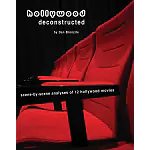In your everyday life, do you sit in one spot and talk to everybody you meet in that same place? Okay, maybe you do but unless that’s the point of the story you’re writing it’s basically not gonna be the most interesting thing to watch.
When an audience invests their time in a movie they do so to escape and be entertained and part of the way an audience is entertained is by the way you structure your story and develop your characters. Locations are key to character development for screenwriters because they tell us a lot about a character without words. They educate us visually about how they live, their habits, where they work, what kind of people they work with and what they experience in their world.
So with that in mind, make sure you use the locations in your screenplay to develop your characters but also use your locations as a means of story progression and pace.
Pace? What do you mean, “pace”? I hear you ask.
Well, it’s simple really. You ever watched a movie where there’s a big tense scene with two people arguing loudly for about five minutes? And then one of the characters goes outside just to get away from the conflict? Well, that’s a change of location. And depending on your choice of location, it may change the pace of your movie and your audience’s engagement.
If the character slams the door and goes into his/her room, well, it’s a pretty static choice of location but it may be the best choice for your character and the story. If however the character kicks the front door open and bursts outside into the rain then maybe sits alone in the woods while he/she gets drenched.. that’s something different. Your character could also jump in his/her car and screech off down the road.
Each decision you make about location has an impact on the way the audience will react and the emotions they will feel. In fact, using the “driving away in the car” as an example, sometimes this actually has a direct impact on an audience, especially if the argument we talked about happened at night and then we cut to the next morning as your character drives off somewhere to get away from it all. This sometimes causes individuals in an audience to shuffle in their seats, since they subconsciously feel the story is progressing and it’s time to get themselves ready for the next chapter.
So if you find yourself writing your scenes based in the same place then take my word for it, the audience WILL get bored, especially if it’s just “talking heads” — two characters chatting with no action. Why not try transferring that conversation to a swimming pool while your characters are doing laps? Or in a moving bus or even on an escalator in a shopping mall. Use the location as a device in your screenwriting and if you do it cleverly, nobody will ever know what you are up to!





George Sesay
Just wanna say thanks to you for the article.